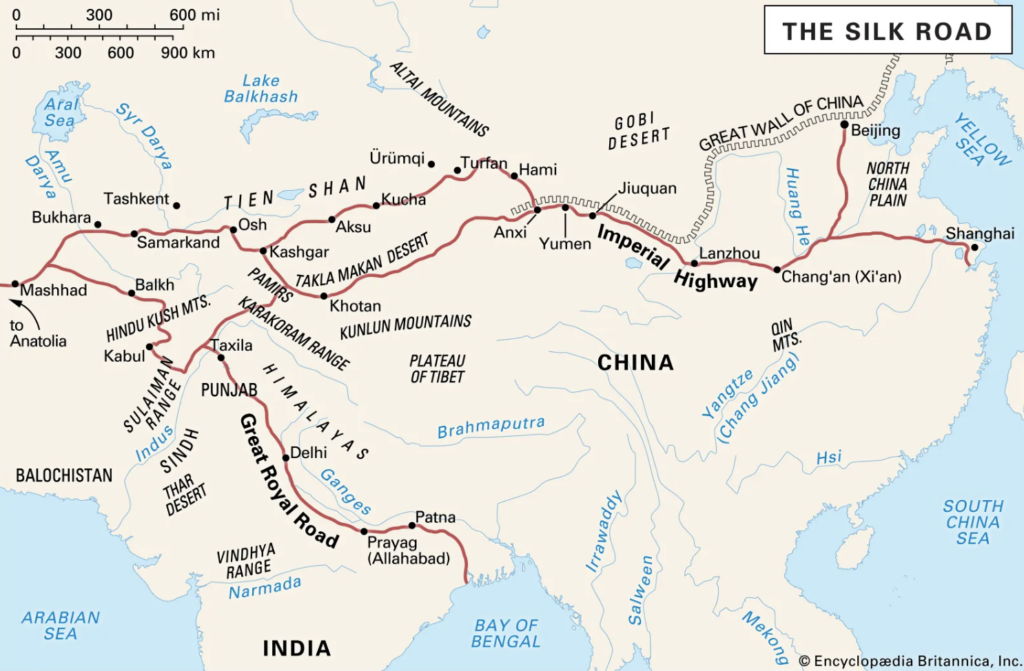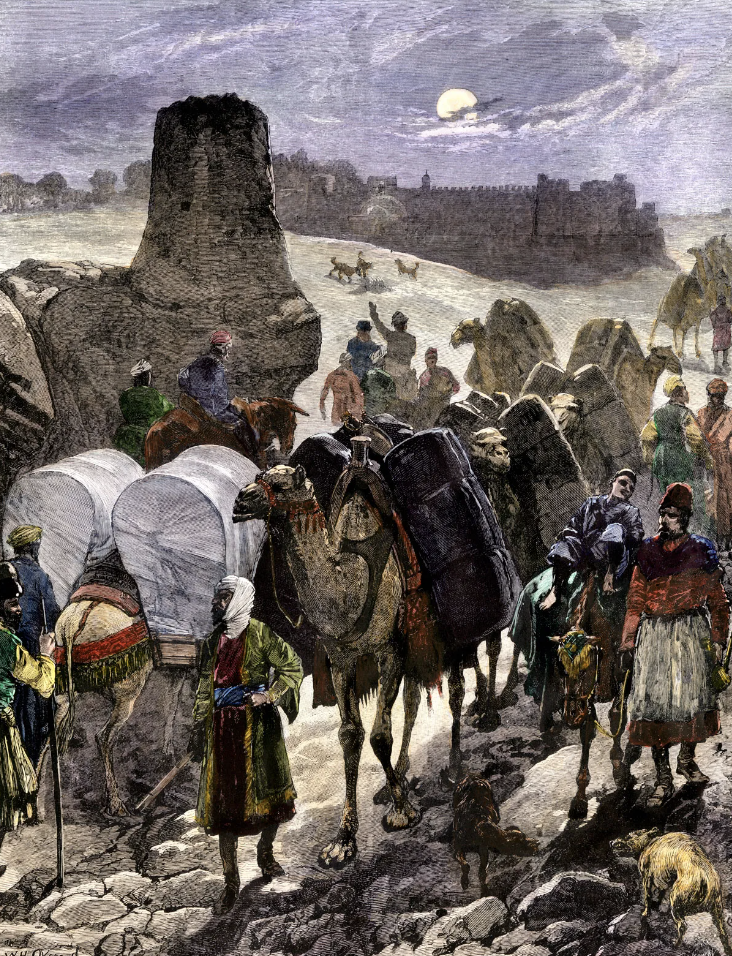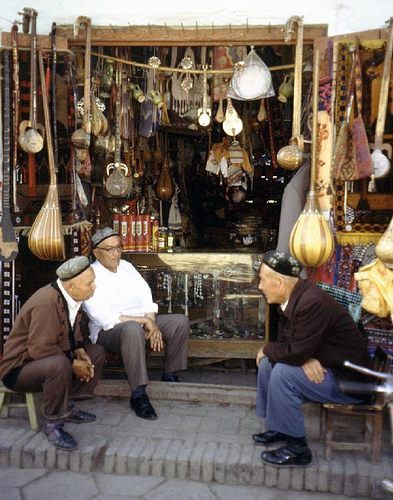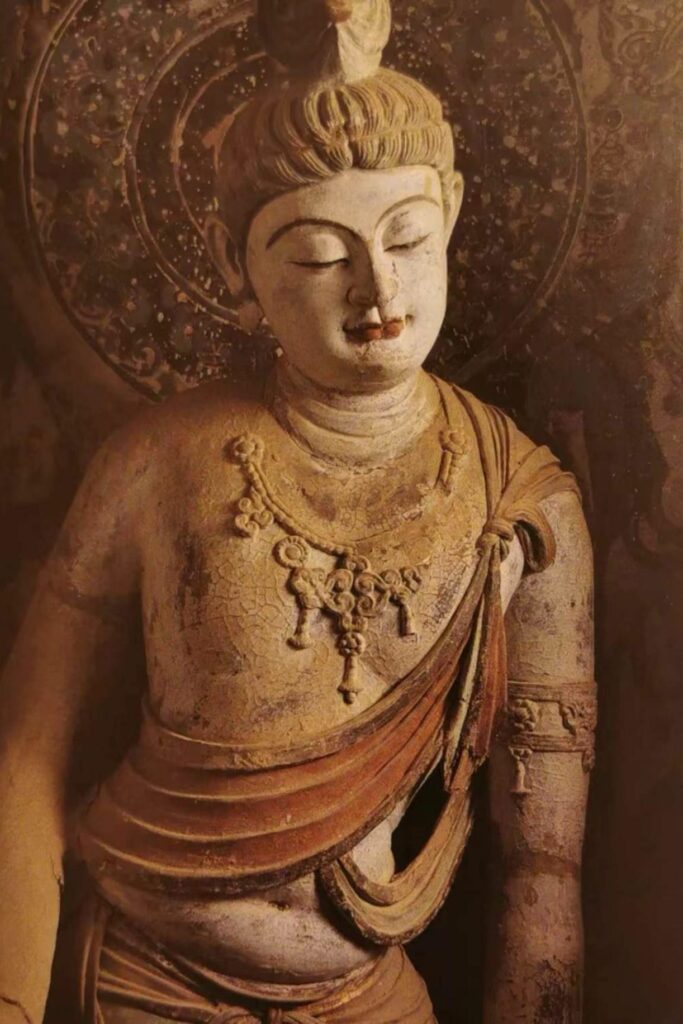SILK ROAD
In Northwest China
Introduction
The Ancient Silk Road was a famous trade route connecting China with Eurasia, named for its original role in transporting silk production from ancient China. The Silk Road started in Chang’an (Xi’an City, Shaanxi Province) or Luoyang (Henan Province) in China, crossed the whole of Northwest China, passed through Central Asian countries, Afghanistan, Iran, Iraq, Syria and so on to reach the Mediterranean Sea, and ended in Rome, with a total length of 6,440 kilometres.


History
The origins of the Silk Road can be traced back to the Han Dynasty in the 2nd century BC, but over time it developed into a vast and busy network linking different civilisations and cultures.
In the Western Han Dynasty, Zhang Qian’s mission to the Western Regions opened China’s silk trade, to the Tang Dynasty, the Silk Road into the most prosperous heyday, the East and West through the Silk Road, official, civil society have carried out a comprehensive and friendly communication. To the Song Dynasty, the rise of maritime trade made the Silk Road began to fall, until the Qing Dynasty, the overall decline.
Influences
The Silk Road is regarded as the ancient link between Eastern and Western civilisations connecting Asia and Europe, with silk being the most representative cargo. For thousands of years, nomads or tribes, merchants, religious people, diplomats, soldiers and academic researchers travelled along the Silk Road, and their communication also contributed to the spread of culture and religion.
Until today, a large number of valuable heritage sites still exist in Northwest China, which are the fruits of the Silk Road civilisation.
Trade

Silk was one of the first major trade commodities. However, many other precious commodities were traded along the route, including tea, spices, porcelain, agate, gold and pearls.
Culture

The Silk Road was a channel for the spread of culture and knowledge. Languages, arts and sciences were communicated. Greek and Roman art and philosophy spread to the East. Those cultural exchanges contributed to mutual understanding and cooperation between different regions.
Religion

Buddhism was introduced to China from India via the Silk Road, greatly influencing the religious beliefs and culture of the Chinese people, and to this day, Buddhist heritages are still very common in China. In addition, it was documented that Islam, Judaism, and Christianity had also spread to China through the Silk Road.